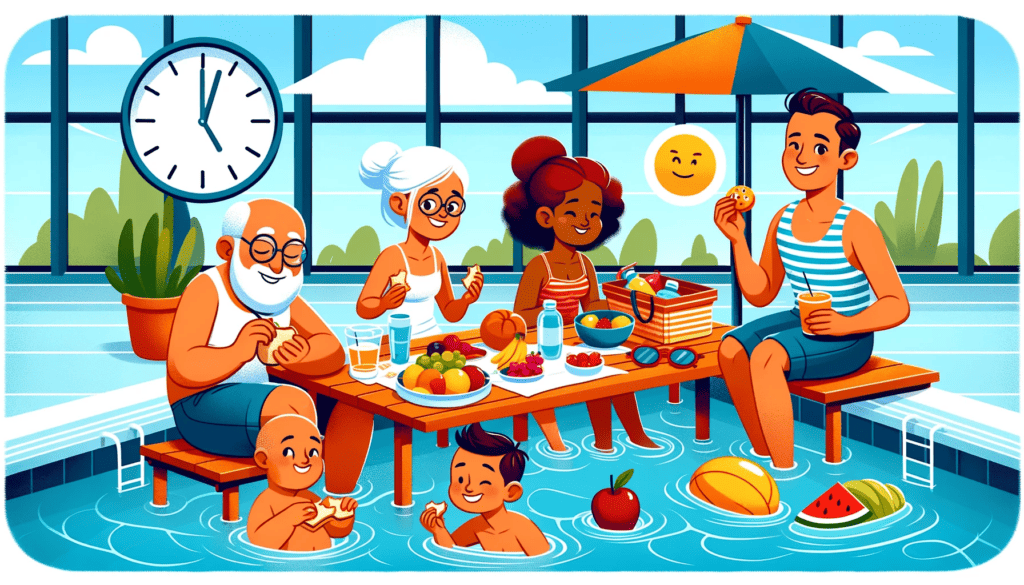
Swimming is a popular activity enjoyed by many, especially during the warmer months. However, there is a common belief that swimming right after eating can be dangerous. This article explores the reasons behind this belief, the scientific evidence supporting it, and provides guidance on how to enjoy swimming safely.
Understanding the Digestive Process
The Role of Blood Flow
After eating, the body directs more blood flow to the digestive system to help with the process of breaking down food. This increased blood flow to the stomach and intestines means that other parts of the body, including muscles used for swimming, receive less blood and oxygen.
Digestion and Physical Activity
Engaging in vigorous physical activity like swimming immediately after eating can lead to discomfort because the body is trying to manage two demanding processes at once: digestion and strenuous muscle activity. This can result in cramps or a feeling of nausea.
Debunking the Myth of Drowning
The Old Wives’ Tale
The idea that swimming right after eating increases the risk of drowning is a long-standing myth. While swimming with a full stomach might be uncomfortable, it does not significantly increase the risk of drowning for most people.
Understanding Cramps
Cramps can occur during swimming, but they are not solely caused by eating beforehand. Factors like muscle fatigue, dehydration, and electrolyte imbalances also play a significant role in cramp development.
When Is It Safe to Swim After Eating?
Waiting Period
It’s generally recommended to wait about 30 minutes to an hour after a light meal before swimming. For larger meals, a longer waiting period of about two hours is advisable. This gives your body enough time to initiate the digestion process without causing significant discomfort.
Listening to Your Body
Everyone’s digestive system is different. Some may feel fine swimming shortly after a meal, while others might need more time. It’s important to listen to your body and understand your own limits and comfort levels.
Alternatives to Waiting
Light Swimming
If you’re eager to get in the water but have recently eaten, consider engaging in lighter swimming activities. Gentle swimming or floating can be a way to enjoy the water without putting too much strain on the body.
Hydration and Snacking
Staying hydrated and choosing light snacks instead of heavy meals can also help if you plan to swim shortly after eating. Foods that are easy to digest, like fruits or energy bars, are better options than large, fatty, or protein-heavy meals.
Swimming right after eating is generally a bad idea because it can lead to discomfort, but it doesn’t drastically increase the risk of drowning as commonly believed. The key is to understand how your body reacts to physical activity post-meal. By waiting a suitable amount of time and choosing light, easily digestible foods, you can enjoy swimming without discomfort. Remember, safety and comfort should always be your top priorities when engaging in any physical activity.






Leave a Reply